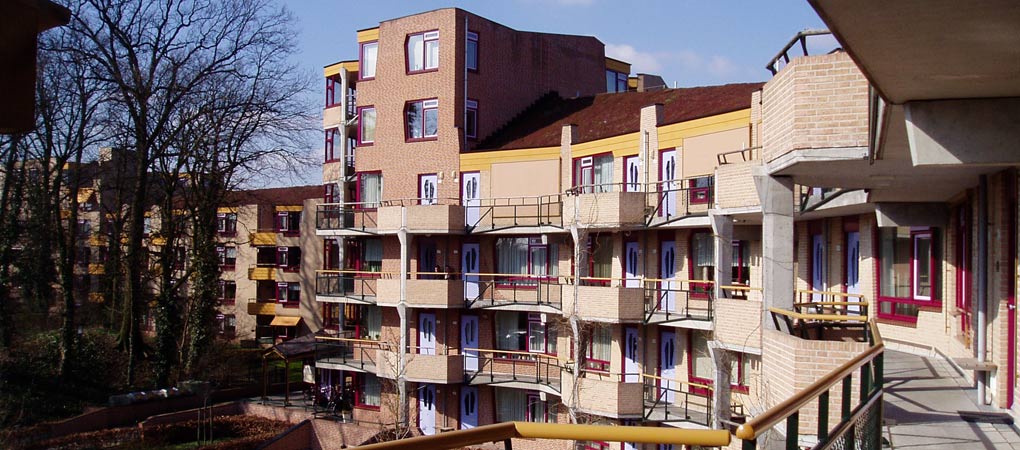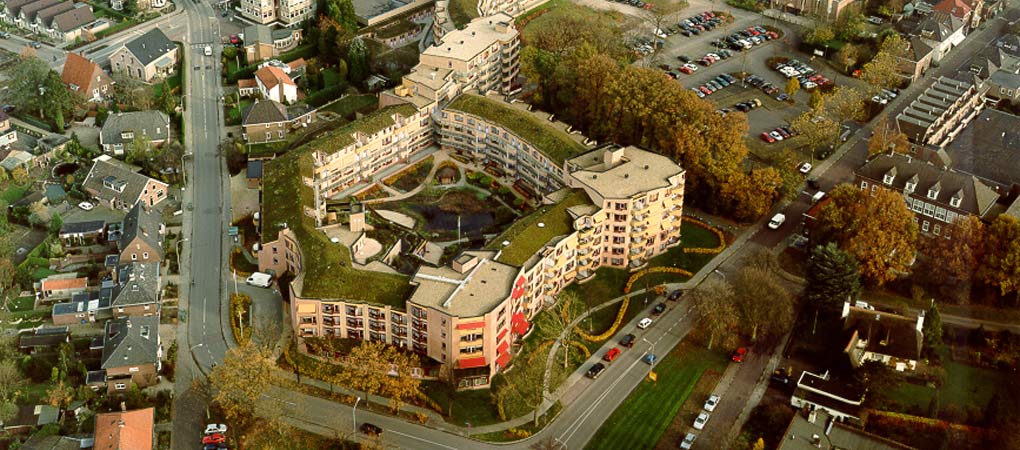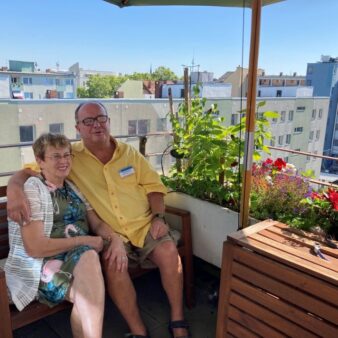As a European exemplar project for integrated care for older persons, this project provides 169 apartments for independent living and 46 units for those people who need much higher levels of care. All design is to lifetime guaranteed standards of accessibility, safety and adaptability. Community facilities are incorporated within the complex and are well used by the general public, helping to ensure that the residents are not isolated from daily life in the small town of Zevenaar. The buildings have been designed to high environmental standards and incorporate a range of sustainable construction features including green roofs, high-density design, storm water retention and the use of environmentally sound building materials. Advanced ICT systems are incorporated to maximise safety, communications and energy management.
Project Description
Aims and Objectives
- To meet the needs of older people who wish to live as independently as possible.
- To provide a range of care options so people do not need to leave the complex as they become increasingly frail.
- To use environmentally sustainable construction methods to provide the accommodation.
Faced with a tremendous shortage of accommodation for older people in the town of Zevenaar, the provincial government decided to develop a project that reflected the new vision of building houses catering for the ‘care’ needs of older people. The Pelgromhof design was selected from 151 projects in a competition for a national model project for sustainable and energy-efficient construction.
The planning of the project began in 1995 and the first residents moved into their apartments in January 2000. The project consists of a four to six storey complex of rental apartments, consisting of 169 independent apartments (38 of which are geared to receiving full care) and a sheltered nucleus of 46 units for residents requiring a much higher level of care. The complex covers an area of 1,200 m2 and is located in the centre of Zevenaar (26,000 population, located south of Arnhem on the German border). The average age of the residents is 75.

The buildings are designed to last 75 years (as opposed to the standard 50 years) and incorporate a range of sustainable construction features including green roofs, high-density design, storm water retention, water saving design, use of environmentally sound construction materials and energy efficient design. An innovative in-floor heating system is used with a 20 per cent higher rate of heat transference than standard.
An ‘Open Construction’ method of design was used where the apartments were laid out internally according to the wishes of the future residents (including choice of how many rooms, size and location of rooms). All designs are lifetime guaranteed standards (i.e. they are suitable for living in at all stages of life including access, safety, accessibility and adaptability) and therefore people do not need to move so often to meet their changing needs. The average apartment size is 76m2.
Communal facilities include a kitchen, restaurant, a small supermarket, theatre, parking facilities, meeting and activity rooms. Some of these can be used by the general public. A beautiful public garden has been created in the centre of the complex, with lakes and terraces on different levels and a waterfall.
Total construction cost of the project was US$18.5m ($85,000 per apartment). It is calculated that the costs of construction will be covered in the long term. The capital costs of the construction were met by a range of European, national and local funding. These included subsidy from the national government for being an exemplary sustainable housing project and from the local government for the provision of theatre and restaurant facilities. Funds from ASWZ’s reserves and other commercial loans were also used.
Why is it innovative?
- Large-scale integrated project for older people with many different innovative approaches combined.
- High social value is achieved by ensuring that residents have recourse to the care facilities within the sheltered complex, without having to move house to do so.
- Open construction – allowing design to be adapted to the uniqueness of human lifestyles.
- Lifetime guaranteed building – providing ease of use, safety, accessibility and adaptability.
- Social cohesion – social integration of those needing care.
Incorporation of a range of environmentally sustainable construction features. - Digital superhighway to improve safety, communications and energy management.
What is the environmental impact?
All construction materials used are environmentally friendly and non-toxic. Natural gypsum is used for sprayed plasterwork and cultivated chestnut, robinia and pine timber are used throughout. Interior window frames are made of wood and mineral wool is used as an insulation material. Natural paint was used internally and externally and shows no sign of wear after five years. Recycled concrete materials were used wherever possible whilst the use of new cement construction was kept to a minimum. All construction waste was separated into eight named categories on site (remaining materials, clean cement, clean wood, clean glass, paper and cardboard, iron and other metals, plastics other than PVC, small chemical waste in a closed container) and taken for recycling by the building contractor.
Is it financially sustainable?
The on-going costs of care for the residents are met as part of a national government funding stream to provide care and support for the older population. It is not anticipated that this source of income will cease. The rent for an apartment is $525 per month. Where the resident cannot afford this, government housing subsidy is provided.
What is the social impact?
The project has resulted in general improved physical health and well-being of the residents. The residents are far less withdrawn now than they were in the previous accommodation. The provision of a theatre and restaurant facilities, visits by a mobile library, the provision of internet access to each apartment all help to ensure that residents feel able to be more involved in their community and beyond. A residents’ committee has been established and acts as liaison with ASWZ and the Pelgromfoundation.
Evaluation
Monitoring of the energy and water consumption has shown that there are significant savings. Studies have also shown there to be significant improvements in the physical health and well-being of the residents.
Transfer
This integrated care concept is now being widely used throughout The Netherlands as well as within Europe and with its exemplar status is widely used as inspiration for other similar developments.
Two other projects have been directly inspired by the Pelgromhof project, one in Gelderland and the other in Limburg.
Partnership
NGO, local community, local government, national government, international agency, private sector



